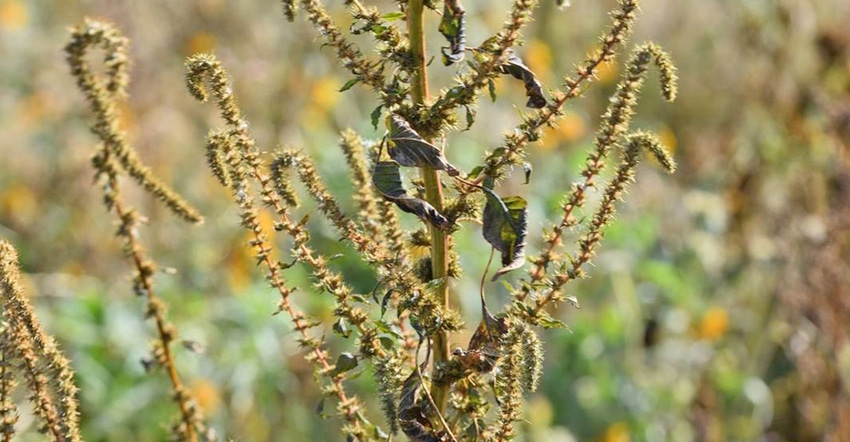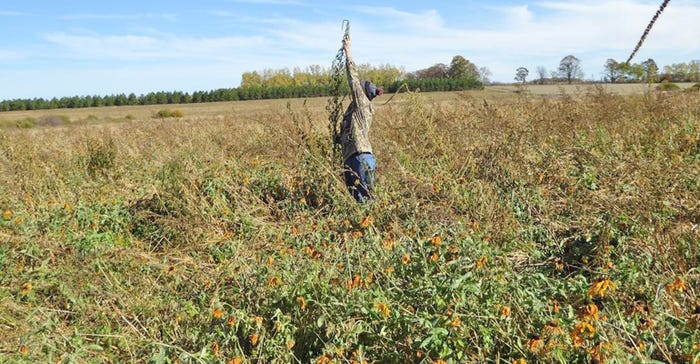
A new Palmer amaranth infestation was found in a conservation planting in Todd County, the Minnesota Department of Agriculture recently reported.
MDA is investigating where the Palmer amaranth seed came from. Officials believe the weed is limited to specific planting sites.
Geir Friisoe, MDA’s director of plant protection, indicated that department officials are optimistic that the weeds found on this site can be controlled and eliminated, due to the field’s late-June seeding and cold overnight temperatures.
“It’s unlikely there is any viable seed on the plants,” he says.
Friisoe credited local officials who were on the lookout for Palmer and immediately notified MDA of suspicious plants.
“We were able to quickly find and identify the Palmer and make a plan for eradication," he says.
Plants will remain in the field until spring, when they will be burned and sprayed with herbicides. The site will be monitored throughout the year.

TALL PALMER: Palmer amaranth is a prolific weed. A single plant produces 100,000 to 500,000 seeds. And it grows a few inches each day, typically reaching 6 to 8 feet or more in height. The person holding up the plant in this photo, taken in Todd County, stands 6 feet, 4 inches. (MDA)

Palmer amaranth was first confirmed in Minnesota in 2016 in Lyon and Yellow Medicine counties. Because of swift action there to control its spread, a small number of plants was found this year at the 2016 sites.
With continued herbicide treatment next year, Friisoe says he is optimistic MDA can completely eradicate the weed infestations in the affected counties.
Palmer amaranth can grow 2 to 3 inches a day, typically reaching 6 to 8 feet or more in height.
Left uncontrolled, a single female Palmer amaranth plant typically produces 100,000 to 500,000 seeds. It is resistant to multiple herbicides, can cause substantial yield losses and greatly increase weed management costs in soybeans and corn.
In Minnesota, Palmer amaranth is listed as a Prohibited Weed Seed. This means no Palmer amaranth seed is allowed in any seed offered for sale in the state. It is also on the state’s Prohibited Noxious Weed Eradicate List. All above- and belowground parts of the plant must be destroyed. Also, no transportation, propagation or sale of this plant is allowed.
The invasive weed is native to the Southwestern United States and northwestern Mexico. It has been found in 28 other states, including Iowa, South Dakota and Wisconsin.
Source: MDA
About the Author(s)
You May Also Like






